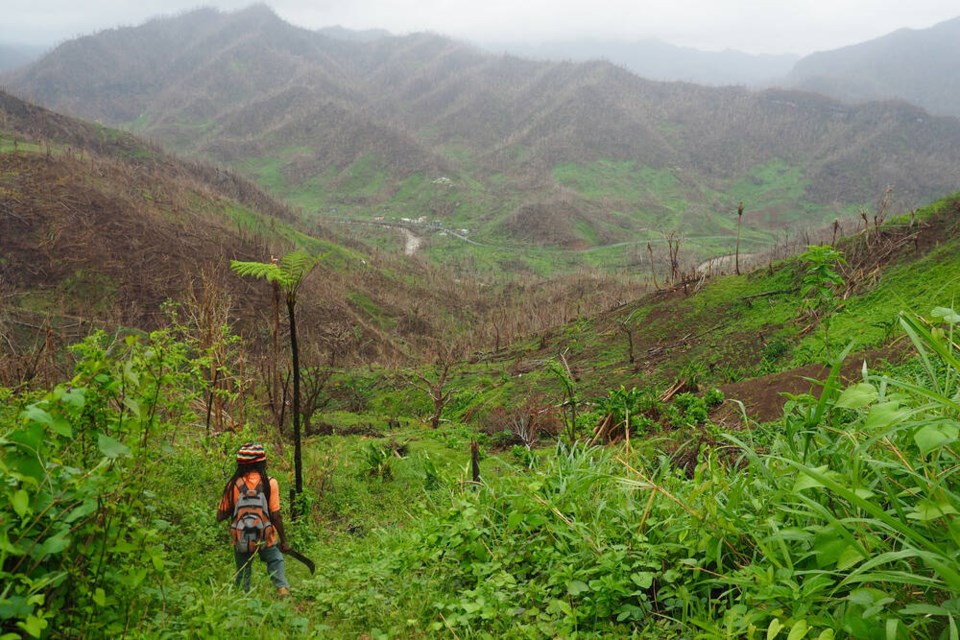A national group of refugee lawyers is calling on the Canadian government to abandon its “ad hoc” approach to humanitarian disaster and adapt immigration policy so climate migrants can access legal pathways into the country.
In a released Nov. 10, the Canadian Association of Refugee Lawyers (CARL) outlines several policy recommendations the federal government could pursue to tackle what it describes as “one of the most pressing issues of our time.”
“sa国际传媒 is in a position to be a world leader in climate migration,” said Maureen Silcoff, former president of CARL and a Toronto-based immigrant and refugee lawyer. “We have the moral obligation, we have the legal tools and I think we have the will.”
Despite its nod to the future, the long-awaited report comes at a time when climate migrants already call sa国际传媒 home. Some of those are Canadians. This summer, nearly 33,000 people were in British Columbia, of which hundreds remain without permanent shelter.
But others fleeing the fallout from climate change have travelled thousands of kilometres to seek refuge in sa国际传媒 — some as refugees, others as temporary foreign workers, according to from Glacier Media.
Since 2008, weather-related hazards have forced more than 21 million people from their homes every year around the world — equivalent to . Most of those displaced come from countries where relatively low incomes make adjusting to a shifting climate especially difficult.
Despite the global scope of the problem, relatively few national leaders have officially contemplated how to adjust existing laws to serve people facing environmental catastrophe.
For a country like sa国际传媒, relatively wealthy and dependent on immigration to grow its economy and workforce, finding proactive solutions is in its own self-interest, says Sicoff.
The report outlines six policy options to help sa国际传媒 cope with a rise in people migrating to the country due to climate change.
The first solution, suggests CARL, is to change applications for permanent residency through sa国际传媒’s humanitarian and compassionate grounds by “explicitly recognizing climate-induced migration.”
Currently, Immigration, Refugees and Citizenship sa国际传媒 (IRCC) decides humanitarian and compassionate grounds cases based on several factors, including ties to sa国际传媒, the interest of children, the situation in their country of origin and access to medical treatment.
The group of refugee lawyers proposes adding short- or long-term environmental disasters or degradation to the list. That includes typhoons, hurricanes, wildfires, tsunamis, desertification, deforestation, rising temperatures and rising sea levels, notes the report.
But it’s not just the direct consequence of an environmentally precarious world — CARL says the government should also include indirect pressures on people fleeing the effects of global heating, such as political strife and profound poverty.
Another option under the Immigrant and Refugee Protection Act would be to grant permanent residence to climate migrants through “public policy considerations,” a path the government has opened up in the past for survivors of the 2004 Indian Ocean tsunami and the 2010 earthquake in Haiti.
All that would be required, states CARL, is a bureaucratic decision to include climate migrants.
The lawyers say that Ottawa could also take in climate migrants through temporary resident permits as a short-term stop-gap.
Other recommendations include:
- mandating removal officers consider the consequences of deportation and whether it would risk the “life, liberty or security” of a person due to climate fallout
- introduce a new class of humanitarian-protected status for migrants who are threatened by climate change
- test all the proposals through pilot programs, so they can be trialled before they work their way into law
“sa国际传媒 has an urgent need to develop policy to deal with the new situation we’re facing right now,” Silcoff said. “That has to be defined by what we are seeing right in front of us.”
Glacier Media has questioned Immigration, Refugees and Citizenship sa国际传媒 over how it will respond to the recommendations, as well as climate migrants more widely.
IRCC wasn’t immediately available for comment.
Stefan Labbé is a solutions journalist covering how people are responding to problems linked to climate change. Have a story idea? Get in touch. Email [email protected].

